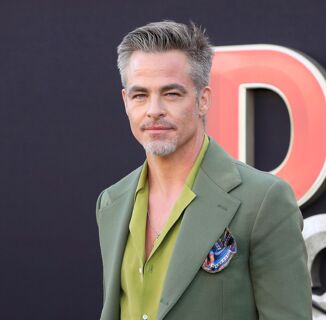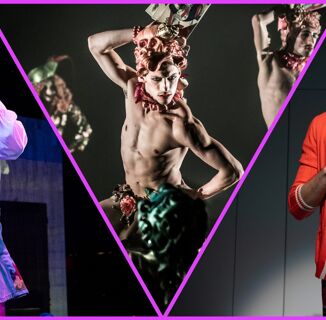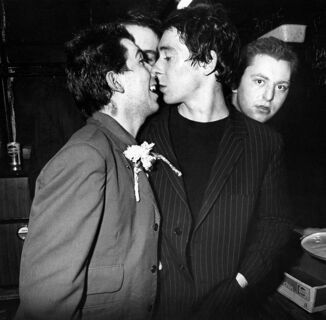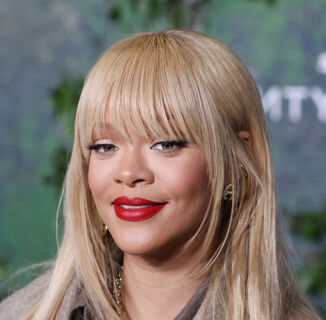Behind every mediocre pop act there remains one constant: a huge fanbase comprised of the LGBTQ community.
If you search any not-quite-Beyonce-level, women-fronted pop act who’s had a song that someone definitely described as “the song of the summer” someone like Ariana Grande, Dua Lipa, or Charli XCX you’ll find fans of all ages, races, and sexualities, but the queer community, and specifically members of the queer community in their 20s, will without a doubt be vastly overrepresented in these fan bases. And while it’s easy to write off as a fun coincidence or a love of dancing, the relationship between the LGBTQ community and pop music is hard to ignore.
To understand why the millennial queer community likes music that wouldn’t be out of place at a mid-2000s middle school dance, you have to go back to what a middle school dance was probably like a young queer pre-teen in the mid-2000s.
A year like 2005, while only 12 years ago, feels like a different lifetime in terms of queer rights. “Don’t Ask, Don’t Tell” was in full swing, gay marriage was prohibited in the vast majority of the country, trans rights were rarely mentioned, and representation in the media was somehow even more abysmal than it is now; being “out” at thirteen seemed a far way off. While being thirteen is inherently awkward, it was almost definitely more awkward for a not-out queer kid in the midst of “that’s gay” pre-teen panic.
There’s an inherent level of guardedness when you’re not out, a layer that can cloak the innocence that usually comes with first dates, first loves, and first kisses. If you’re not dating, it can feel like you’re left out of some big life experience that all your peers have bought into. If you are datingand not outit can feel equally alienating. You can see other people feeling something that just doesn’t quite click for you; you can tell you’re missing whatever “it” is.
And pop music, good pop music, usually captures “it.”
So the pop music that came out in 2005, 2006, 2007, was capturing a feeling that queer kids could see, could understand, could sometimes feel fleeting, but would never be able to connect to at the same level as our straight peers. While you can love the music that came out in your teens, it often isn’t the soundtrack to your idyllic–or dramatic–young romances.
Good pop songs that come out today also capture the feeling of fleeting young love. But now, a 25-year-old member of the LGBTQ community has probably felt the adrenaline rush of having a crush on someone you could actually sleep with. Pop music captures all of these vaguely defined but strong emotions you have when you’re first falling for someone. Pop music is innocent, it’s sexual, it’s naive, it’s thrilling; it reproduces a feeling that many straight people feel as teens but the LGBTQ community doesn’t experience until adulthood. Connecting to pop music as an adult is a way to reclaim what the LGBTQ community often lacked in their teens.
The perfect example of this phenomenon is Carly Rae Jepsen.
While her commodification and romanticization of “girlishness” has irked some people, it’s that replication of naivete of falling in love for the first time that makes her music so popular with the LGBTQ community. A song like “Cut To The Feeling” or “Call Me Maybe” is quintessentially teen, despite Jepsen being over thirty. And her audience, at least for live performances, skews towards “queer white people ages 25 to 35.”
As Olivia Craighead wrote for Buzzfeed, Jepsen’s music is all about capturing “The Feeling.” But for the queer community this feeling is more urgent, more tenuous, and happens to us a little later; the music is relatable and popular because so much of the LGBTQ community is feeling “The Feeling” for the first time when they’re in college and not at a middle school dance. But it’s still, at least in the exact moment of feeling “The Feeling,” as innocent as it is for a preteen who just wants to dance with their crush to T-Pain.
Pop music does, and should, create a world in which desire, emotion, and love reign supreme. And while this world can be attractive to any person, it’s even more important to the LGBTQ community; pop music creates a world in which queer people can recreate a, perhaps romanticized, version of teenagedom that we never got to experience as actual teens.
The realm of pop music is one in which queer desire, queer emotion, and queer love are finally given equal footing, even if it’s 12 years after that middle school dance.
Help make sure LGBTQ+ stories are being told...
We can't rely on mainstream media to tell our stories. That's why we don't lock our articles behind a paywall. Will you support our mission with a contribution today?
Cancel anytime · Proudly LGBTQ+ owned and operated
Read More in Culture
The Latest on INTO
Subscribe to get a twice-weekly dose of queer news, updates, and insights from the INTO team.
in Your Inbox















